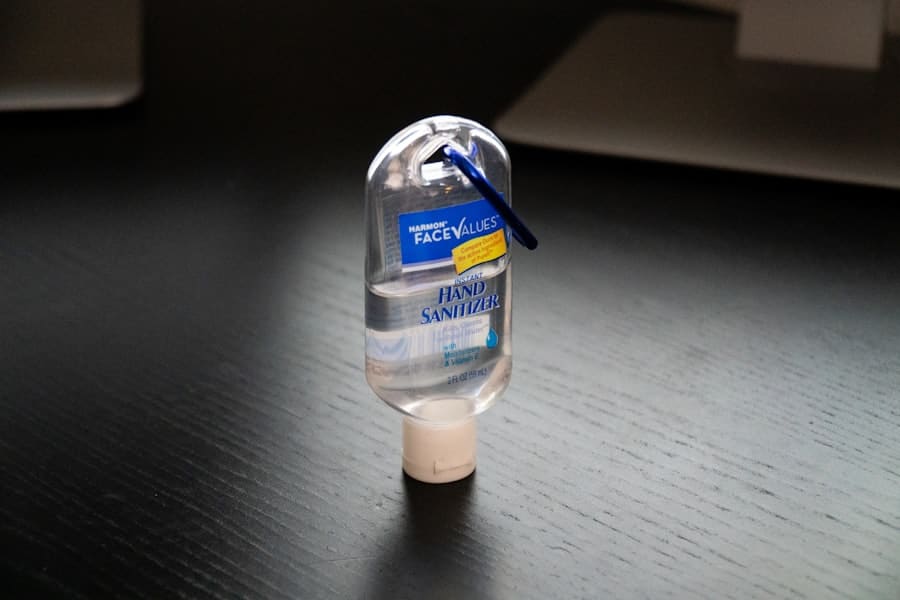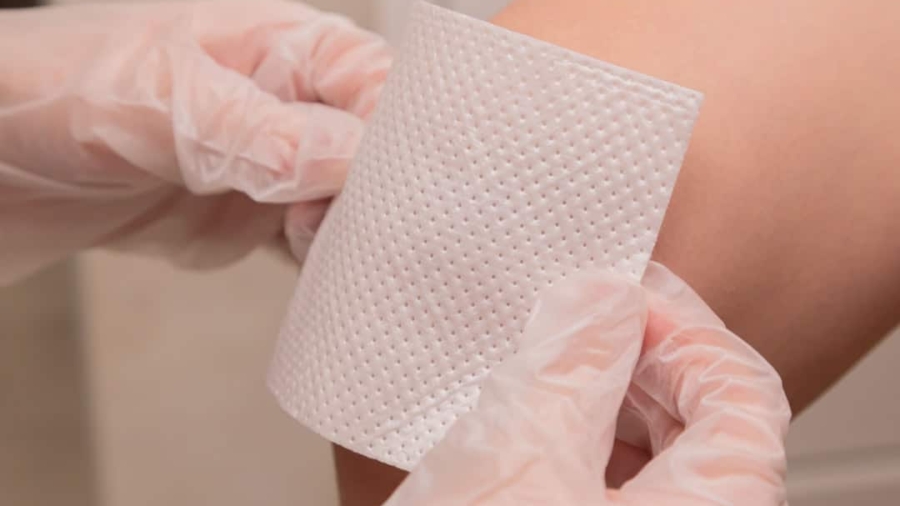The advent of smart technology has permeated various sectors, and healthcare is no exception. Among the most innovative developments in this field is the emergence of smart bandages, which represent a significant leap forward in wound care management. These advanced dressings are equipped with sensors and other technologies that allow for real-time monitoring of wounds, providing healthcare professionals with critical data that can enhance treatment outcomes.
Smart bandages are not just a technological novelty; they embody a paradigm shift in how we approach wound care. The integration of electronics and materials science has led to the development of dressings that can communicate with external devices, such as smartphones or computers, enabling continuous monitoring without the need for frequent physical examinations.
This capability is particularly beneficial in managing chronic wounds, such as diabetic ulcers or pressure sores, where timely intervention is crucial to prevent complications. As healthcare systems worldwide grapple with the challenges of an aging population and rising rates of chronic diseases, smart bandages offer a promising solution that could transform patient care.
Key Takeaways
- Smart bandages are a new technology that combines traditional wound dressings with advanced monitoring capabilities.
- Smart bandages work by incorporating sensors and microelectronics to monitor wound healing progress and detect signs of infection or other complications.
- The benefits of smart bandages for wound healing monitoring include real-time data collection, early detection of complications, and personalized treatment plans.
- Challenges and limitations of smart bandages include cost, integration with existing healthcare systems, and potential privacy concerns.
- Current developments in smart bandage technology focus on improving sensor accuracy, data transmission, and user-friendly interfaces, with potential future applications in chronic wound management and telemedicine.
How Smart Bandages Work
At the core of smart bandage technology lies a combination of materials science and electronic engineering. These bandages typically incorporate flexible sensors that can detect various physiological parameters related to wound healing. For instance, some smart bandages are equipped with moisture sensors that monitor the hydration levels of the wound environment.
Maintaining an optimal moisture balance is essential for effective healing; too much moisture can lead to maceration, while too little can cause the wound to dry out and impede recovery. In addition to moisture sensors, many smart bandages also feature temperature sensors that track the thermal profile of the wound area. Elevated temperatures can indicate inflammation or infection, prompting timely medical intervention.
Some advanced models even include biosensors capable of detecting specific biomarkers associated with infection or healing progress. These sensors convert biochemical signals into electrical signals, which can then be transmitted wirelessly to healthcare providers or patients’ mobile devices. This real-time data transmission allows for immediate analysis and response, significantly enhancing the management of wound care.
Benefits of Smart Bandages for Wound Healing Monitoring

The benefits of smart bandages extend beyond mere convenience; they have the potential to revolutionize wound healing monitoring in several key ways. One of the most significant advantages is the ability to provide continuous, real-time data on wound conditions. Traditional methods often require regular dressing changes and physical assessments, which can be uncomfortable for patients and may lead to delays in treatment.
Smart bandages eliminate much of this need by allowing healthcare providers to monitor wounds remotely, reducing the frequency of in-person visits while still ensuring that patients receive timely care. Moreover, smart bandages can enhance patient engagement in their own healing process. By providing patients with access to their wound data through mobile applications, individuals can better understand their condition and take an active role in their recovery.
This empowerment can lead to improved adherence to treatment protocols and lifestyle modifications that support healing. Additionally, the data collected by smart bandages can contribute to more personalized treatment plans, as healthcare providers can analyze trends over time and adjust interventions based on individual patient responses.
Challenges and Limitations of Smart Bandages
Despite their promising potential, smart bandages are not without challenges and limitations. One significant hurdle is the complexity of integrating electronic components into biocompatible materials that can safely interact with human skin. The materials used must not only be effective in monitoring but also comfortable and non-irritating for patients.
Ensuring that these devices remain functional over extended periods while maintaining their integrity poses a considerable engineering challenge. Another limitation lies in the data management aspect of smart bandage technology. The continuous flow of data generated by these devices necessitates robust data storage and analysis systems.
Healthcare providers must be equipped with the tools to interpret this information effectively, which may require additional training and resources. Furthermore, there are concerns regarding data security and patient privacy. As smart bandages collect sensitive health information, ensuring that this data is protected from unauthorized access is paramount.
The intersection of technology and healthcare raises important questions about how patient information is stored, shared, and utilized.
Current Developments in Smart Bandage Technology
The field of smart bandage technology is rapidly evolving, with numerous research initiatives and commercial products emerging in recent years. One notable development is the incorporation of antimicrobial agents into smart bandages to prevent infections proactively. For example, researchers have explored embedding silver nanoparticles within the dressing material, leveraging their antimicrobial properties to reduce bacterial colonization at the wound site.
This innovation not only enhances healing but also addresses one of the most significant complications associated with wound care. Additionally, advancements in wireless communication technologies have improved the functionality of smart bandages. Many modern designs utilize Bluetooth or NFC (Near Field Communication) to transmit data seamlessly to smartphones or tablets.
This connectivity allows for easy access to wound information for both patients and healthcare providers, facilitating timely decision-making based on real-time data. Furthermore, some companies are exploring the use of artificial intelligence algorithms to analyze data collected from smart bandages, enabling predictive analytics that could foresee complications before they arise.
Potential Future Applications of Smart Bandages

Looking ahead, the potential applications for smart bandages extend far beyond traditional wound care. One exciting avenue is their use in post-operative recovery monitoring. After surgical procedures, patients often face risks related to wound healing, including infection or complications from improper care.
Smart bandages could provide surgeons with continuous feedback on healing progress, allowing for early detection of issues and more tailored post-operative care plans. Moreover, there is potential for smart bandages to play a role in chronic disease management beyond wound care. For instance, individuals with diabetes could benefit from smart dressings that monitor foot ulcers or other complications associated with their condition.
By integrating glucose monitoring capabilities into these bandages, patients could receive comprehensive feedback on both their blood sugar levels and wound status simultaneously. This holistic approach could significantly improve outcomes for individuals managing chronic illnesses.
Ethical and Privacy Considerations
As with any technology that collects personal health data, ethical and privacy considerations surrounding smart bandages are paramount. The collection of sensitive information raises questions about consent and ownership of data. Patients must be informed about what data is being collected, how it will be used, and who will have access to it.
Transparency in these processes is essential to build trust between patients and healthcare providers. Additionally, there are concerns regarding data security in an increasingly digital world. Cybersecurity threats pose risks not only to individual privacy but also to public health if sensitive health information were to be compromised on a larger scale.
Ensuring robust encryption methods and secure data storage solutions will be critical as smart bandage technology continues to develop. Policymakers will need to establish clear regulations governing the use of health data collected by wearable devices to protect patient rights while fostering innovation in healthcare technology.
Conclusion and Outlook for the Future
The future of smart bandage technology holds immense promise for transforming wound care management and enhancing patient outcomes across various healthcare settings. As research continues to advance and new innovations emerge, we can expect smarter materials that integrate seamlessly with biological systems while providing invaluable insights into healing processes. The potential applications extend beyond traditional uses, paving the way for smarter healthcare solutions that address chronic disease management and post-operative care.
However, as we embrace these technological advancements, it is crucial to remain vigilant about ethical considerations and privacy concerns associated with health data collection. Striking a balance between innovation and patient rights will be essential as we navigate this new frontier in healthcare technology. With continued investment in research and development, smart bandages may soon become a standard component of modern medical practice, revolutionizing how we approach wound care and patient monitoring in an increasingly digital age.
In a recent article discussing the future of smart bandages for wound healing monitoring, researchers have highlighted the potential for Lenovo laptops to revolutionize healthcare technology. The article “The Best Lenovo Laptops” explores the innovative features and capabilities of Lenovo laptops that could be utilized in the development of smart bandages. By incorporating advanced software and design elements, Lenovo laptops could play a crucial role in enhancing the monitoring and treatment of wounds through smart bandage technology.
FAQs
What are smart bandages?
Smart bandages are advanced wound dressings that incorporate technology to monitor and track the healing process of a wound. They can provide real-time data on factors such as temperature, moisture levels, and bacterial presence.
How do smart bandages work?
Smart bandages typically contain sensors and microelectronics that can detect changes in the wound environment. These sensors can transmit data wirelessly to a healthcare provider or a mobile device, allowing for remote monitoring of the wound.
What are the benefits of smart bandages for wound healing monitoring?
Smart bandages offer several benefits, including the ability to provide continuous, real-time monitoring of the wound, early detection of complications, and personalized treatment plans based on the data collected. They can also reduce the need for frequent in-person visits to healthcare providers.
What are the potential applications of smart bandages?
Smart bandages have the potential to be used in various healthcare settings, including hospitals, clinics, and home care. They can be particularly useful for monitoring chronic wounds, such as diabetic ulcers, and for post-operative care.
What are the challenges associated with smart bandages?
Challenges associated with smart bandages include the need for reliable and durable sensors, ensuring the security and privacy of the data collected, and the cost of implementing this technology on a large scale. Additionally, regulatory approval and integration into existing healthcare systems are also important considerations.

